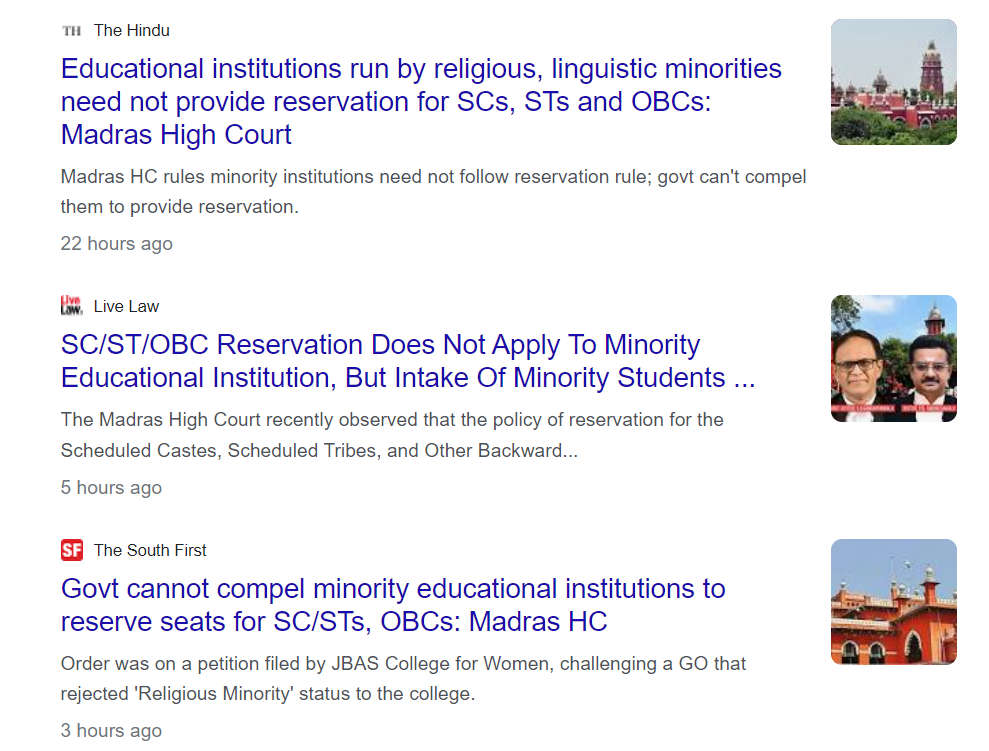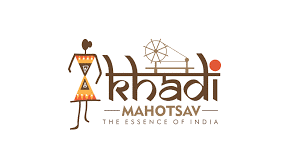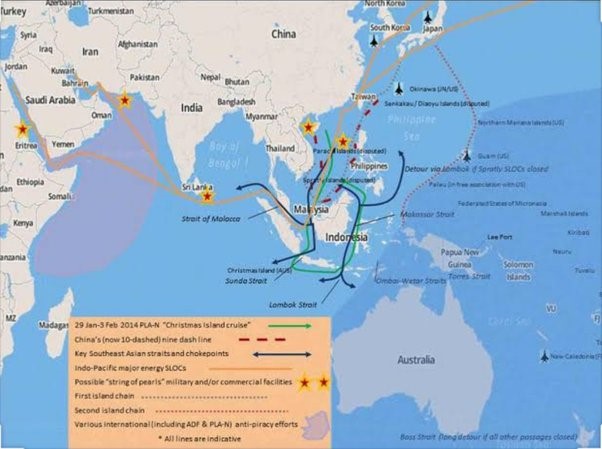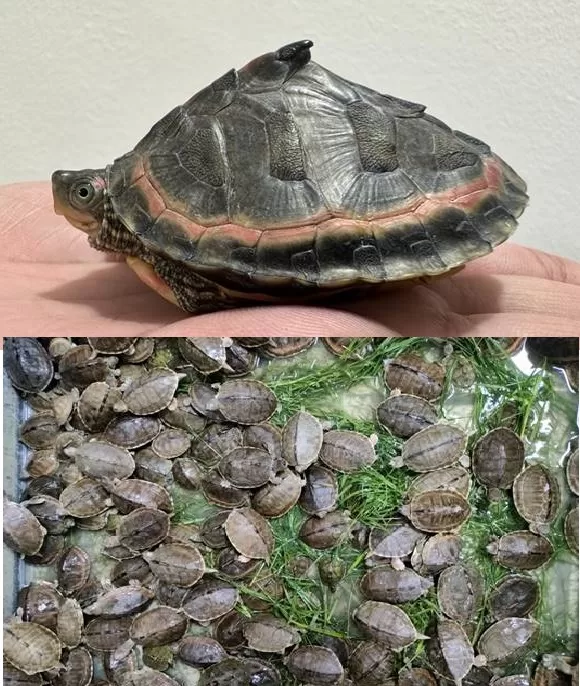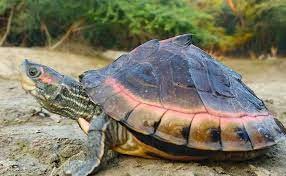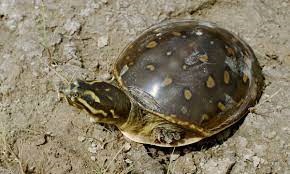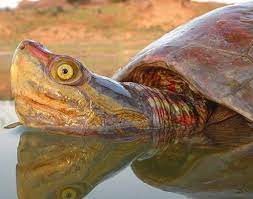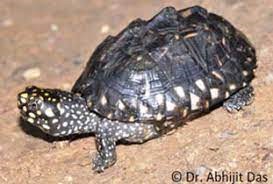2. Minority Institutions need NOT provide Reservations: Madras HC
3. Nobel Prize in Medicine
4. Khadi Mahotsav 2023
5. Asia’s Disputed Waters
6. Operation Kachchhap
7. JuMBO
India and Argentina sign ‘Social security agreement’
Context:
Recently, the Embassy of India has entered into a ‘Social Security Agreement’ with Argentina. This agreement is designed to protect the rights of Indian nationals employed in Argentina and Argentine nationals seeking employment in India.
Key Points:
- The ‘Social Security Agreement’ aims to safeguard the rights of Indian nationals working in various Indian and international organizations in Argentina, as well as Argentine nationals seeking employment opportunities in India.
- The agreement establishes a legal framework that allows professionals from both countries to access old-age and survivor’s pensions. It also ensures access to permanent and total disability pensions for employed individuals and adheres to Argentina’s laws regarding contributory benefits within their Social Security System.
- Additionally, the agreement addresses matters such as rent, subsidies, and lump sum payments, in accordance with the national laws of both India and Argentina.
India-Argentina Relations:
- India and Argentina have maintained diplomatic relations for more than seven decades, with diplomatic ties being established in 1949. These historical connections have paved the way for collaboration in various sectors.
- Trade relations between India and Argentina have been expanding, encompassing IT, agriculture, automobiles, and pharmaceuticals. In 2022, bilateral trade reached 6.4 billion dollars, making India the fourth-largest trading partner of Argentina.
- Both countries have agreed to facilitate the exchange of researchers and startups in biotechnology and agriculture.
4. India and Argentina collaborate on multiple international platforms, including the G-20 and the United Nations. They often share common perspectives on global issues such as climate change, sustainable development, and South-South cooperation.
Minority Institutions need NOT provide Reservations: Madras HC
Context:
The Madras High Court has ruled that communal reservation policies for SC/ST/OBC citizens do not apply to minority institutions. Government Constraints: The judges held that the government cannot enforce reservation policies on minority institutions.
Key Highlights by Madras HC
- Continued Minority Status: The court emphasized that once an institution is granted minority status, it remains in effect until the National Commission for Minority Educational Institutions (NCMEI) cancels it for valid reasons, such as a shift in educational objectives.
- Merit-Based Admissions: The court upheld the government’s authority to specify that minority institutions can admit up to 50% of students from respective religious and linguistic minorities based on merit.
- Exclusion Clause: The judges clarified that students admitted based on merit should not be counted within the first 50% of admissions allocated for minorities.
Case Background
- Petitioner’s Argument: The petitioner challenged a Government Order (GO) issued in November 2021, which denied the extension of religious minority status to the college due to its admission of 52% minority students in the academic years 2018-19 and 2019-20.
- Advocate General’s Position: The Advocate General argued that such admissions violated a 1998 GO that limited minority admissions to 50%.
- College’s Stance: The college contended that minority educational institutions should have a permanent status without the need for periodic extensions.
- It also asserted that the Tamil Nadu Backward Classes, Scheduled Castes and Scheduled Tribes (Reservation of Seats in Private Educational Institutions) Act, 2006, should not be applicable to minority institutions.
Legal Analysis
- Constitutional Provisions: The judges found support in Article 15(5) of the Constitution, introduced through the 93rd amendment in 2005, which specifically excludes minority institutions from the State Government’s authority to provide special provisions for reservations.
- Definition of Private Educational Institution: They noted that Section 2(d) of the 2006 Act also excludes minority institutions established under Article 30(1) of the Constitution from its definition of ‘private educational institution.’ Therefore, the State cannot impose reservation provisions on minority educational institutions.
- Permanent Status: The court emphasized that the National Commission for Minority Educational Institutes Act, 2004, does not contemplate granting minority status for a temporary or restricted period. Instead, it continues until the Commission cancels it.
Conclusion
The court has nullified the 2021 GO and directed the government to allow the petitioner institution to maintain its status as a minority institution, provided it complies with other requirements.
Nobel Prize in Medicine
Nobel Prize Honors Pioneers of mRNA Vaccine Development
- In 2023, Katalin Kariko and Drew Weissman were awarded the Nobel Prize in Physiology or Medicine for their groundbreaking contributions to the development of mRNA vaccines against Covid-19.
Understanding the Role of mRNA
Messenger RNA (mRNA)
- mRNA is a single-stranded RNA molecule involved in protein synthesis.
- It is transcribed from a DNA template and acts as a messenger between the cell’s nucleus and cytoplasm.
- mRNA carries genetic information, allowing the cell’s machinery to translate it into amino acids for protein synthesis.
Innovative Contributions of Nobel Laureates
Overcoming Immunogenicity Challenges
- Kariko and Weissman’s research revealed a significant obstacle: the body’s immune response to lab-grown genetically engineered mRNA.
- They experimented with chemically modified mRNA variants, demonstrating a substantial reduction in the inflammatory response.
- Their discoveries laid the foundation for the development of mRNA vaccines, which played a pivotal role in combatting the COVID-19 pandemic.
Understanding mRNA Vaccines
Revolutionizing Vaccine Technology
- mRNA vaccine technology, known since the 1980s, had not reached a practical scale until recent advancements.
- These vaccines use messenger Ribonucleic Acid (mRNA) to convey instructions to the immune system.
- Genetically engineered mRNA instructs cells to produce viral proteins, initiating an immune response.
How mRNA Vaccines Work
- Cells produce the viral protein from the mRNA instructions.
- The immune system recognizes this foreign protein and generates antibodies.
- Antibodies provide lasting protection, swiftly responding to reinfection and marking pathogens for destruction.
The Production of mRNA Vaccines
Creating mRNA Vaccines
- Identifying a target viral protein that triggers an immune response is the initial step.
- The chosen protein must differ significantly from the body’s own proteins to avoid autoimmunity.
- DNA with information for the target protein is used to generate the mRNA needed for vaccine production.
- After mRNA production, the DNA is removed to ensure only the mRNA is included in the vaccine.
This efficient process allows rapid production of substantial mRNA quantities in a short period.
Khadi Mahotsav 2023
Context:
In the context of celebrating Mahatma Gandhi’s birth anniversary, Union Minister Shri Narayan Rane introduced the ‘KHADI MAHOTSAV’ festival in Mumbai, emphasizing its alignment with the “Vocal for Local” and ‘Atma Nirbhar Bharat Abhiyan’ initiatives.
- The KVIC sector has witnessed substantial growth, with sales escalating more than fourfold to Rs. 1,34,629.91 crore in FY 2022-23 from Rs. 33,135.90 crore in FY 2014-15.
- Additionally, production in the KVI sector has seen a threefold increase, reaching Rs. 95,956.67 crore in FY 2022-23 from Rs. 27,569.37 crore in FY 2014-15.
- Running from October 2nd to October 31st, the ‘Khadi Mahotsav’ aims to promote Khadi, handloom, handicrafts, and local products.
- This festival encompasses various activities, such as contests, awareness campaigns, and exhibitions, designed to boost local industries and create employment opportunities.
Some key facts about Khadi:
- Khadi, stemming from “khaddar,” is a hand-spun and hand-woven natural fiber cloth, championed by Mahatma Gandhi as a symbol of self-sufficiency during the Indian freedom struggle.
- The first piece of khadi was crafted in the Sabarmati Ashram in 1917–18.
- Khadi is produced from cotton, silk, or wool and is spun using a charkha (spinning wheel).
- Known for its versatility, Khadi keeps people cool in summer and warm in winter.
- It played a crucial role in the Swadeshi movement, promoting self-reliance.
- The American Civil War led to a raw cotton shortage in Britain, and Indian cotton was procured at low prices.
- The Swadeshi movement boycotted foreign cloth, receiving support from nationalist politicians and Indian mill owners.
- In 1922, Gandhi urged the Indian National Congress to establish a khadi department, leading to the creation of the All India Khadi Board (AIKB) and the All India Spinner Association (AISA).
- Gandhi encouraged INC members to personally spin cotton and pay dues in yarn to promote spinning and weaving.
- The khadi movement evolved, initially focusing on economic solutions and later becoming a fabric for villagers to use themselves.
- Gandhi’s personal commitment to khadi included wearing only dhoti and using wool shawls when necessary.
- He invented the Patti Charkha for faster and more controlled spinning.
- The khadi movement extended to regions like Comilla in Bangladesh, where weaving centers were established to promote local production.
Regarding the Khadi and Village Industries Commission (KVIC):
- KVIC is a statutory body established by the Khadi and Village Industries Act, 1956, falling under the Ministry of Micro, Small and Medium Enterprises (MSMEs).
- Founded in 1957, KVIC has undergone amendments in 1965 and 2006.
- It holds significant constitutional, statutory, and quasi-judicial authority in India.
- KVIC’s objectives include promoting employment, marketing and selling Khadi articles, and empowering underprivileged and rural sections of society.
- Its functions encompass planning, promoting, organizing, and implementing programs for Khadi and Village Industries (KVI) development.
- KVIC coordinates with various agencies engaged in rural development, maintains raw material reserves, and facilitates common service facilities.
- It supports marketing and sales of KVI products, encourages research and development, and provides financial assistance to individuals and institutions in the sector.
- KVIC enforces product standards and initiates projects, programs, and schemes for the development of Khadi and Village Industries.
Notable KVIC schemes include:
- KVIC PMEGP: Replacing REGP and PMRY, it is a credit-linked subsidy program for nationwide employment generation.
- Interest Subsidy Eligibility Certificate (ISEC): This scheme mobilizes funds from banking institutions for KVIC projects, bridging funding gaps beyond budgetary allocations.
- Scheme of Fund for Regeneration of Traditional Industries (SFURTI): It promotes cluster development in Khadi and Village Industry products and is implemented by KVIC.
- Market Promotion Development Assistance (MPDA): Aiming to increase income for artisans, assistance is distributed to Artisans (40%), Producers (40%), and Sellers (20%).
Khadi Reform and Development Program (KRDP): Focusing on employment generation and enhanced earnings for artisans, it aids in repositioning Khadi to meet contemporary needs.
Asia’s Disputed Waters
The Dispute over Scarborough Shoal: Key Details
- A recent dispute in the South China Sea between China and the Philippines has brought attention to the ongoing tensions in this strategically significant area, which has implications for countries in the Indo-Pacific region, including India.
Scarborough Shoal: A Disputed Atoll in the South China Sea
- The current disagreement centers on Scarborough Shoal, an uninhabited atoll located in the eastern part of the South China Sea.
- This atoll is primarily composed of rocks with very little land, and it is situated approximately 220 kilometers from the Philippines, falling within the Exclusive Economic Zone of the Philippines.
- Notably, its proximity to the Philippines’ coastline is much closer than that to China’s.
- Additionally, it is known by different names, being referred to as ‘Bajo de Masingloc’ and ‘Panatag’ by the Philippines, and ‘Huangyan Island’ by China.
- The name ‘Scarborough’ was bestowed upon it after a ship named ‘Scarborough’ from the East India Company ran aground on one of the atoll’s rocks.
Escalation of the Dispute: Recent Developments
- The dispute escalated shortly after Chinese Coast Guard vessels installed a 300-meter-long barrier to block boats from the Philippines, adding to the longstanding tensions in the South China Sea.
- The core of the South China Sea conflict revolves around competing claims to land features such as islands and reefs, along with the associated territorial waters.
The Legal Framework: UNCLOS and Territorial Claims
- According to the UN Convention on the Law of the Sea (UNCLOS), each state has the right to establish its territorial sea up to a limit not exceeding 12 nautical miles, as well as an Exclusive Economic Zone (EEZ) extending up to 200 nautical miles from the baseline of the territorial sea.
- The Asia Maritime Transparency Initiative (AMTI) reports disputes over approximately 70 reefs and islets, with China, Vietnam, the Philippines, Malaysia, and Taiwan constructing more than 90 outposts on these contested features.
Efforts to Establish a Code of Conduct (CoC)
- Numerous countries, including China and ASEAN member states, have conflicting interests in the South China Sea and have been working toward establishing a Code of Conduct (CoC) to manage these disputes.
- In 2002, ASEAN and China adopted a Declaration of Conduct (DoC) that emphasized peaceful dispute resolution in accordance with international law, including UNCLOS.
- In 2013, the Philippines initiated arbitration proceedings against China under UNCLOS, alleging violations of the convention.
In 2016, a tribunal ruled against China’s expansive “nine-dash line” claim, which sought to assert control over nearly the entire South China Sea.
- The tribunal found China’s claims to be inconsistent with UNCLOS and clarified rules regarding exclusive economic zones and continental shelves around islands and rocks in the sea.
China’s Expansive Claims and Actions in the South China Sea
- China’s extensive territorial claims in the South China Sea, as represented by the “nine-dash line,” overlap with claims from other nations such as Taiwan, Vietnam, the Philippines, Malaysia, and Brunei.
- China has undertaken substantial military and infrastructure development in the region, including the construction of artificial islands equipped with military installations, runways, and missile systems.
Regional and International Concerns
- These actions have raised concerns among neighboring countries and the international community about China’s growing military presence in the area and its challenge to freedom of navigation in the South China Sea.
- This has led to disputes and tensions, prompting freedom of navigation operations by the United States and other nations to uphold their rights under international law.
- These developments have also generated concerns about regional stability and the potential for conflict.
India’s Stake in the South China Sea
- For India, the South China Sea holds vital importance as it serves as a major trade route for oil trade in the Pacific region.
- Any disruption in this area can have economic repercussions for India and other affected countries.
- India is recognized as a significant player in the region, and Southeast Asian nations are eager to collaborate with India both economically and strategically.
- Given that a substantial portion of India’s trade passes through this region, it is imperative for India to safeguard its interests in the South China Sea.
Operation Kachchhap
Context:
In Nagpur, Bhopal, and Chennai, the Directorate of Revenue Intelligence (DRI) apprehended six individuals in possession of 955 live baby Gangetic turtles representing various species.
About Operation:
- This operation was initiated based on intelligence that uncovered a syndicate engaged in the illegal trafficking of these turtles.
- Notably, some of these turtles fall under the vulnerable or near-threatened category as per the IUCN Red List and the Wildlife (Protection) Act, 1972.
- As a result of this operation, six individuals were intercepted, and the baby turtles were successfully recovered. Among the rescued Gangetic turtle species are the Indian Tent Turtle, Indian Flapshell Turtle, Crown River Turtle, Black spotted/Pond Turtle, and Brown Roofed Turtle.
- The ongoing efforts of the DRI are directed towards combatting illegal wildlife trafficking and safeguarding these vulnerable species from threats such as illegal trade and habitat degradation.
Species of Turtles:
1. Indian Tent Turtle (Pangshura tentoria):
- Common Names: Pachera (Hindi), Majhari Katha (Bengali)
- Max Shell Length: Up to 11.8 inches
- Conservation Status: Least Concern on IUCN Red List
- Description: A large turtle with an elevated brown carapace, flat sides, and a keel. It has a pink/yellow plastron with dark blotches and webbed feet. Resembles the Indian roofed turtle but lacks an eye crescent.
- Typically found in rivers like Mahanadi, Krishna, Godavari, Ganges, and ponds, mainly in Katarniaghat Wildlife Sanctuary and Dudhwa Tiger Reserve in Uttar Pradesh.
2. Indian Flapshell Turtle (Lissemys punctata):
- Common Names: Matia, Sundri (Hindi), Til Kachim (Bengali), Pal Aamai (Tamil)
- Max Shell Length: Up to 14 inches
- Conservation Status: Vulnerable on IUCN Red List, Schedule I of the Indian Wildlife Protection Act
Description: A large freshwater turtle with an olive-brown carapace adorned with yellow spots. It is a softshell turtle with a leathery shell instead of a hard bony carapace, featuring a pale plastron and yellow-spotted head. Distributed across mainland India in various wildlife sanctuaries and parks.
3. Crown River Turtle (Hardella thurjii)
- Common Names: Kala Dhond (Hindi), Kali / Kalo Katha (Bengali)
- Max Shell Length: Up to 24 inches (2 feet)
- Conservation Status: Endangered on IUCN Red List, Schedule III of the Punjab Wildlife Act, Schedule I of the Indian Wildlife Protection Act
Description: A large freshwater turtle with a flat, dark brown carapace featuring a disjointed vertebral keel. It has a yellowish plastron with black blotches and four yellow stripes on each side of the head, resembling a crown. Found in various locations across India.
4. Black spotted/Pond Turtle (Geoclemys hamiltonii)
- Common Names: Bhut Katha, Kalo (Bengali), Black Pond Turtle, Indian Spotted Turtle
- Max Shell Length: Up to 14 inches
- Conservation Status: Endangered on IUCN Red List, Schedule I of the Indian Wildlife Protection Act
Description: A large turtle with distinctive yellow and white spots on the head and limbs. Its carapace has three noticeable keels and is black with yellow blotches, while the plastron is yellow with black blotches. Webbed feet. Found in various locations, including national parks and wildlife sanctuaries.
5. Brown Roofed Turtle (Pangshura smithii):
- Common Names: Chapant, Pachera (Hindi), Vaittal Katha (Bengali)
- Max Shell Length: Up to 9 inches
- Conservation Status: Near Threatened on IUCN Red List
Description: A moderately sized aquatic turtle with a flattened, keeled carapace, webbed feet, olive-brown carapace, and black plastron. It has a gray head with a dark top and brown spots behind each eye. Found in rivers, including the Indus River, Ganges River, and their tributaries in multiple regions.
JuMBO
About JuMBOs:
- JuMBOs, which stands for Jupiter Mass Binary Objects, are Jupiter-sized entities recently detected in space, existing independently of any stellar connections.
- These objects appear in pairs and were initially identified by the James Webb Space Telescope (JWST) during its examination of the Orion Nebula.
- It is speculated that JuMBOs may have originated in regions of the nebula where material density was insufficient to give rise to fully-fledged stars.
Orion Nebula:
- The Orion Nebula (M42) serves as the habitat for JuMBOs and happens to be the nearest extensive star-forming area to Earth.
- Within the Orion Nebula, one can find numerous young stars, some accompanied by gas and dust discs that have the potential to evolve into planets.
James Webb Space Telescope (JWST):
- The JWST, a high-resolution space telescope with sensitivity to infrared wavelengths, carried out the aforementioned survey.
Situated approximately 1,400 light-years away from Earth, the Orion Nebula was the focal point of this investigation.


